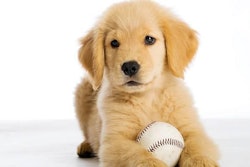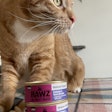A large and growing majority of U.S. pet owners consider their pets to be part of the family, and this human-animal bond is one of the most important factors behind pet owners' willingness to spend generously on pet products and services, according to Packaged Facts, a market research publisher with a diverse catalog of reports on pet products and services.
Part of the reason pet owners are spending more on their companions is because not only do they increasingly view their pets as family, but research indicates that an investment in their pets is also in many ways an investment in themselves. It's a concept that some experts in the medical industry refer to as "one health," or the idea that human health is connected to animal health and the environment.
According to Packaged Facts' Pet Owner Survey data from January 2015, three out of four dogs owners report being healthier and happier because of their canine companions: 38% strongly agree and 36% somewhat agree that their dogs have a positive impact on their physical health, and 44% strongly agree and 36% somewhat agree that their dogs have a positive impact on their mental health. The ratings for cat ownership are nearly as high: 34% of cat owners strongly agree and 31% somewhat agree that their cats have a positive impact on their physical health, and 41% strongly agree and 33% somewhat agree that their cats have a positive impact on their mental health.
There are several examples over the past several years that point to the blurring lines between products designed for humans and those designed for pets. The shift extends not only to retail products such as human grade pet food, but also to the veterinary segment.
For example, highly regarded Johns Hopkins University recently opened the Center for Image-Guided Animal Therapy. The new center allows Johns Hopkins to provide pets with many of the same advanced equipment and procedures that benefit humans, including imaging tools to diagnose pets and services involving image-guided biopsies and minimally invasive procedures. John Hopkins, renowned for its contributions to human medicine and unaffiliated with any veterinary schools, can now assist various veterinarians from outside practices who need to bring dogs, cats, and more exotic pet patients to the university for advanced diagnostic scans and therapies. The cost for these imaging procedures is no small sum for pet owners, yet it's no surprise that so many pet owners are willing to foot the bill, especially considering that spending on veterinary services overall has been on the uptick.
In the soon-to-be-released report, “U.S. Pet Market Outlook, 2015-2016,” Packaged Facts estimates that the veterinary services segment (including pet products sold through the channel) is the pet industry's second largest, with US$23 billion in revenue in 2014, up 5%. Solid growth is expected for the future, and the compound annual growth rate (CAGR) for the veterinary services segment from 2014-19 is projected to be 5%.














